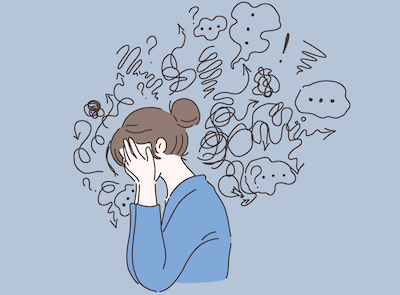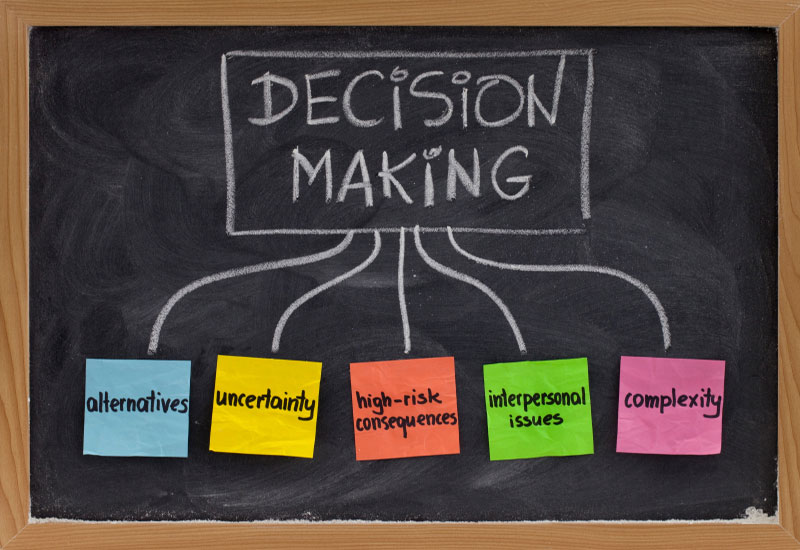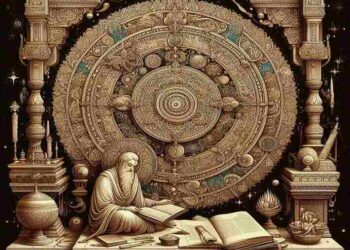Table of Contents
ToggleIntroduction
How Literature Can Improve Critical Thinking Skills Critical thinking skills are more important than ever in a time where information is plentiful and decisions must frequently be made fast. The capacity to objectively examine, assess, and synthesize information—known as critical thinking—enables people to solve difficult problems, make well-informed decisions, and interact with the environment in a meaningful manner. Literature is one of the best resources for fostering critical thinking.
Although literature is frequently thought of as a kind of education or amusement, it is much more than that. Fiction, poetry, drama, and non-fiction all push readers to consider moral quandaries, comprehend other points of view, and delve into the intricacies of society and human nature.
‘Readers are urged to consider their preconceptions, pose significant queries, and assess the intentions and deeds of characters through literature. The abilities required for critical thinking, such as analysis, interpretation, and reasoning, are developed through this intense interaction process.
1. Understanding Complex Characters and Their Motivations
One of the most fundamental aspects of critical thinking is the ability to understand complex situations from multiple perspectives. Literature offers rich, multifaceted characters whose motivations, desires, and actions invite deep analysis. By reading about characters who operate in morally gray areas or make decisions that challenge societal norms, readers are prompted to question what motivates individuals and why they act in the way they do.
For example, in Shakespeare’s Macbeth, readers are asked to consider the psychological complexity of the protagonist’s ambition and guilt. Macbeth’s descent into moral corruption is not simply a matter of villainy; it involves internal conflict, pressures from his wife, and a longing for power. Analyzing his motivations forces readers to examine the factors that influence decision-making and behavior, encouraging them to think critically about the nuances of human psychology.
Read more
Similarly, in novels like Crime and Punishment by Fyodor Dostoevsky, readers delve into the mind of Raskolnikov, a character who justifies murder for a philosophical ideal. The process of critically assessing Raskolnikov’s actions, the morality of his reasoning, and the consequences of his decisions teaches readers to evaluate the ethical dimensions of behavior, pushing them to question their own assumptions about right and wrong.

2. Engaging with Multiple Viewpoints and Perspectives
Critical thinking involves the ability to see beyond one’s personal viewpoint and understand differing perspectives. Literature is an excellent medium for exploring diverse viewpoints, particularly in novels and stories that are told from multiple perspectives or through unreliable narrators.
In works like The Great Gatsby by F. Scott Fitzgerald, readers experience the world through the eyes of Nick Carraway, who offers a limited, subjective view of the story. As readers, we must critically assess Nick’s biases, his interpretations of the characters and events, and the discrepancies between his perceptions and the reality of the situation.
The exercise of evaluating unreliable narrators or interpreting stories from different character viewpoints forces readers to challenge their assumptions and develop a deeper, more nuanced understanding of complex situations.
Similarly, novels like To Kill a Mockingbird by Harper Lee offer perspectives on race, justice, and morality that are shaped by the characters’ experiences and backgrounds. Through the eyes of Scout Finch, readers are invited to grapple with the social injustices and racial prejudices of the time, forcing them to confront their own biases and preconceptions.
By reading texts with multiple perspectives, readers are better equipped to evaluate arguments, identify biases, and consider a range of viewpoints—key skills for critical thinking.
3. Analyzing Themes and Symbols
At its core, literature is often about exploring deeper meanings and universal themes. Themes such as love, power, loss, justice, and identity are explored in literature across cultures and time periods. By analyzing these themes, readers learn to think critically about how human beings interact with each other, with society, and with the world.
In novels like 1984 by George Orwell, readers are introduced to the theme of totalitarianism, the dangers of unchecked government power, and the concept of surveillance. Orwell’s use of symbolism—the omnipresent “Big Brother” image, the concept of “doublethink,” and the Party’s control of language—encourages readers to evaluate the ways in which power can be manipulated and how language can be used to shape reality.
Analyzing the symbols and themes in Orwell’s novel requires readers to think critically about the relevance of these ideas in their own lives and in the context of contemporary politics.
Similarly, in The Lord of the Flies by William Golding, the symbols of the conch, the beast, and the island itself offer insights into the nature of civilization, savagery, and the loss of innocence. Readers are encouraged to analyze how the characters’ descent into violence mirrors the collapse of social order, provoking deeper reflections on human nature and society.
Through the analysis of themes and symbols, readers learn to identify underlying messages in the text, evaluate the effectiveness of literary devices, and draw connections between the story and broader societal issues—critical skills for any thinker.
4. Questioning Assumptions and Challenging Ideas
One of the most significant ways in which literature enhances critical thinking is by encouraging readers to question their assumptions and challenge conventional wisdom. Great literature often tackles controversial or taboo subjects, forcing readers to confront uncomfortable truths and reflect on their own beliefs.
For instance, The Handmaid’s Tale by Margaret Atwood presents a dystopian world in which women’s rights are stripped away and their bodies are controlled by a totalitarian regime. By reading about the oppressive regime of Gilead, readers are challenged to consider the ways in which power, gender, and control intersect in society.
Atwood’s portrayal of a world where women are relegated to mere reproductive vessels compels readers to think critically about gender inequality, the dangers of extremism, and the need to protect individual rights.
Similarly, Frankenstein by Mary Shelley explores themes of creation, scientific responsibility, and the consequences of playing God. Readers are encouraged to critically assess Victor Frankenstein’s decisions, his ethical blindness, and his neglect of his creature, all of which lead to tragedy.
This process encourages readers to think about the implications of technological advancements and human ambition, pushing them to consider the consequences of unchecked progress.
Literature’s capacity to challenge readers’ views and force them to consider alternative viewpoints is central to developing a more sophisticated and reflective form of critical thinking.
5. Enhancing Problem-Solving and Decision-Making Skills
Critical thinking is also about problem-solving—recognizing a problem, analyzing potential solutions, and making informed decisions. Literature often presents characters with complex problems or moral dilemmas, requiring readers to evaluate the characters’ choices and consider alternative solutions.
In Les Misérables by Victor Hugo, readers follow the journey of Jean Valjean, a former convict who grapples with the decision of whether to reveal his true identity and risk his freedom or continue living under an assumed name to protect his loved ones. Valjean’s internal struggle between justice and mercy, personal sacrifice, and loyalty poses significant ethical questions for readers. Analyzing his decisions forces readers to confront their own values and make judgments about the right course of action in difficult circumstances.
Read more
Likewise, in The Road by Cormac McCarthy, readers encounter a post-apocalyptic world where survival itself becomes the ultimate challenge. The characters—father and son—must constantly make decisions about where to go, whom to trust, and how to hold on to their humanity. These decisions, and the ethical quandaries they present, prompt readers to think critically about survival, morality, and human connection in extreme situations.
By analyzing characters’ decision-making processes, readers develop problem-solving skills that go beyond literary analysis, enhancing their ability to think critically in real-life situations.

6. Encouraging Reflection and Self-Examination
Finally, literature encourages critical thinking by fostering reflection and self-examination. Many works of literature are introspective and provoke readers to consider their own beliefs, biases, and assumptions. Whether through the lens of a narrator who grapples with personal dilemmas or a character who faces a moral crisis, literature provides a mirror for readers to reflect on their own lives.
For example, in The Catcher in the Rye by J.D. Salinger, readers are invited to reflect on the alienation and disillusionment of the protagonist, Holden Caulfield. Holden’s critique of the “phoniness” of the adult world forces readers to consider their own feelings about growing up, authenticity, and societal expectations.
This kind of reflective reading encourages readers to think about how literature mirrors their own experiences and how the insights they gain can be applied to their personal lives.
Similarly, in The Bell Jar by Sylvia Plath, readers are given a glimpse into the protagonist’s mental health struggles. The novel encourages introspection on issues like identity, societal pressure, and mental illness, prompting readers to reflect on their own well-being and societal norms.
Conclusion
The study of literature offers far more than just an understanding of stories and characters. It provides a powerful way to develop and refine critical thinking skills—skills that are essential for navigating the complexities of life.
By analyzing characters’ motivations, examining themes and symbols, engaging with multiple perspectives, and reflecting on moral dilemmas, literature fosters the development of analytical thinking, problem-solving, and ethical reasoning.
Literature’s ability to challenge assumptions, question norms, and encourage self-reflection makes it a unique and valuable tool in the cultivation of critical thinking. Whether it’s through engaging with the works of classic authors like Shakespeare and Dostoevsky or exploring contemporary voices in literature, readers are constantly encouraged to think deeply, challenge their own views, and broaden their understanding of the world around them.
In a rapidly changing world, the ability to think critically is a vital skill. Literature provides readers with a space to explore the complexities of human nature and society, honing the cognitive and emotional tools necessary to engage meaningfully with the world.
Read more
FAQ
1. How does literature improve critical thinking in students?
Literature helps students develop critical thinking by encouraging them to analyze complex characters, themes, and situations. By engaging with diverse viewpoints, reflecting on moral dilemmas, and questioning assumptions, students learn to think more deeply and critically about the material. Literature also challenges students to consider the implications of characters’ decisions and to think about broader societal issues.
2. What types of literature are best for developing critical thinking?
While all types of literature can foster critical thinking, works that feature complex characters, moral dilemmas, and multiple perspectives are particularly effective. Novels like 1984, Frankenstein, and The Great Gatsby challenge readers to evaluate the motivations of characters and reflect on broader societal themes, making them excellent choices for developing critical thinking.
3. Can literature help with decision-making and problem-solving?
Yes, literature often presents characters with difficult decisions or moral dilemmas, which forces readers to evaluate various options and consider the consequences of each. By analyzing these situations, readers develop better problem-solving and decision-making skills that can be applied to real-life situations.
4. How can literature encourage self-reflection?
Literature encourages self-reflection by presenting characters who grapple with complex emotions and situations. As readers engage with these characters’ journeys, they are prompted to reflect on their own beliefs, values, and assumptions. This introspection helps readers become more self-aware and better equipped to navigate their personal lives.
5. How can teachers use literature to foster critical thinking in the classroom?
Teachers can foster critical thinking in the classroom by encouraging open-ended discussions, asking thought-provoking questions, and providing opportunities for students to explore different interpretations of the text. Activities like group discussions, debates, and creative projects can also help students think critically about the material and engage with the text in meaningful ways.
Read more
















